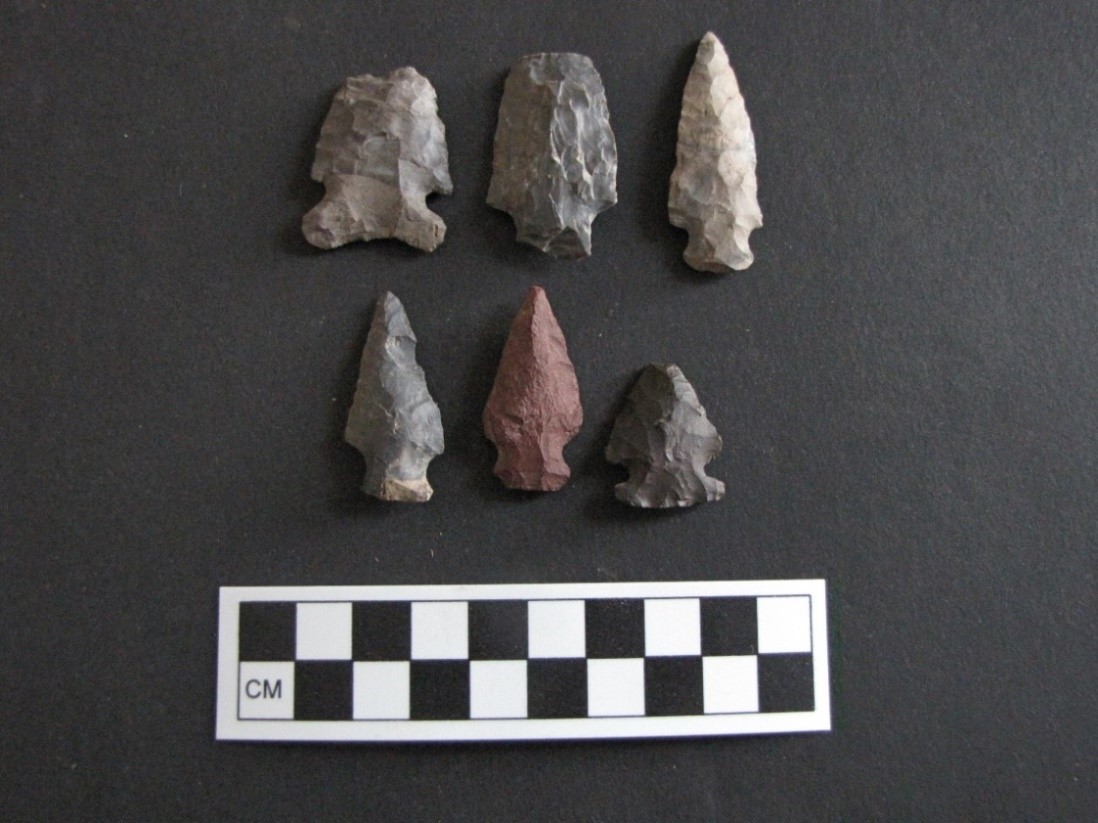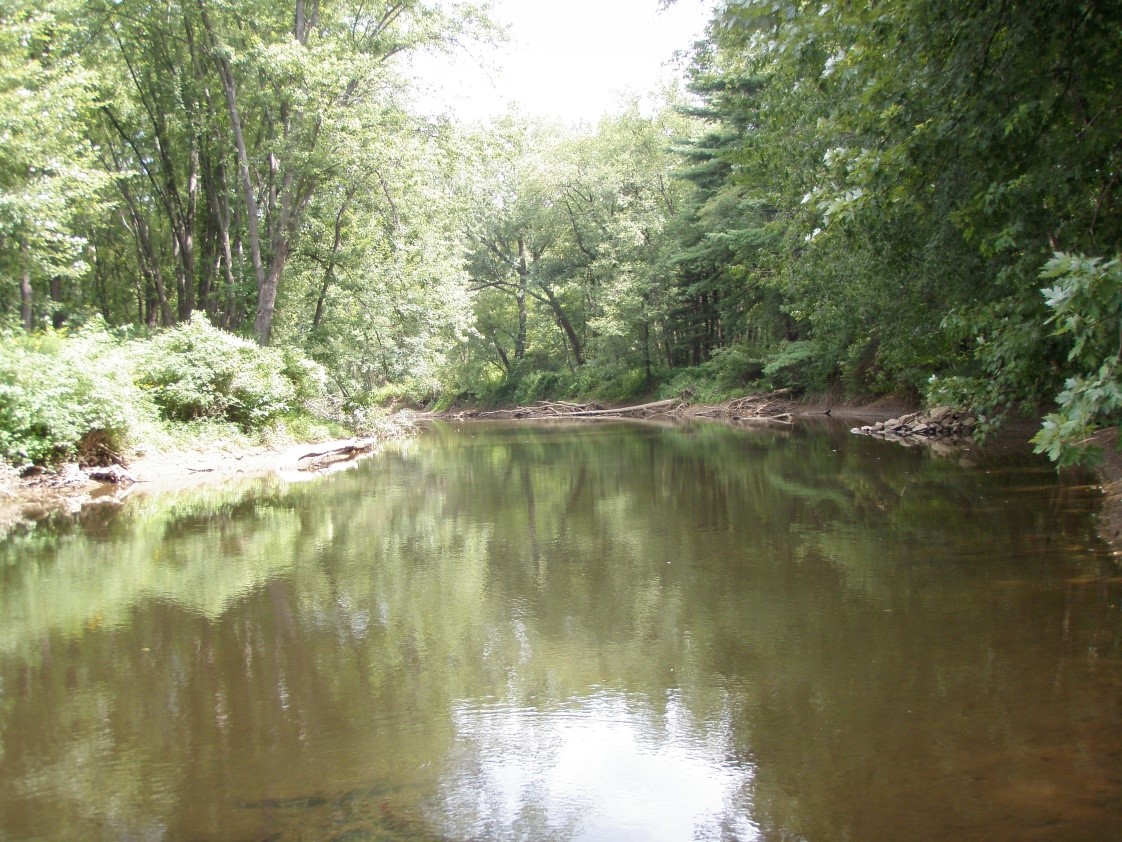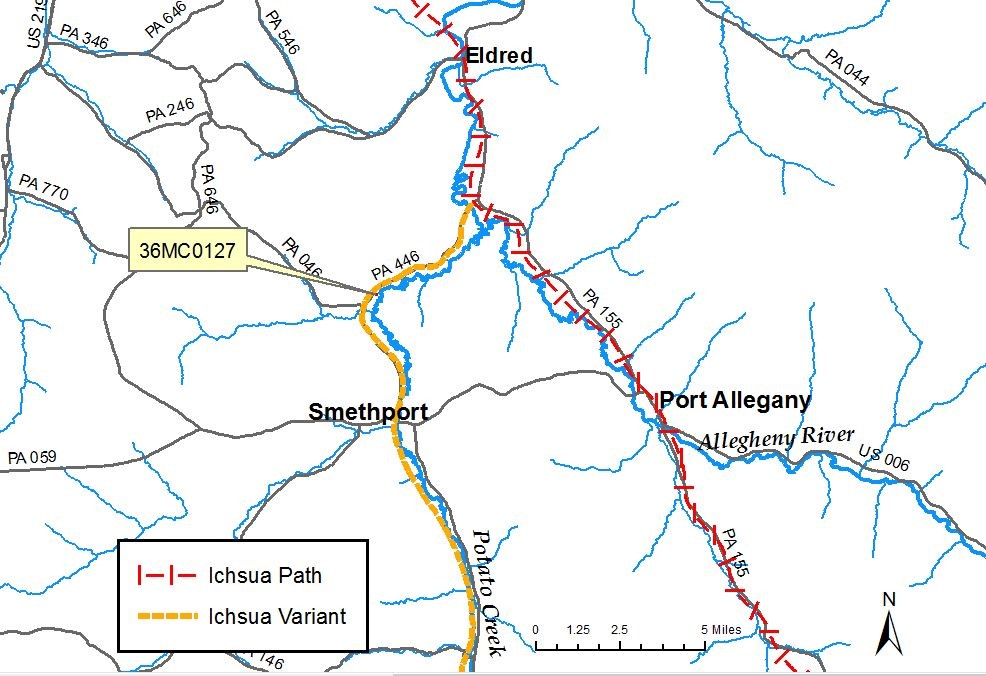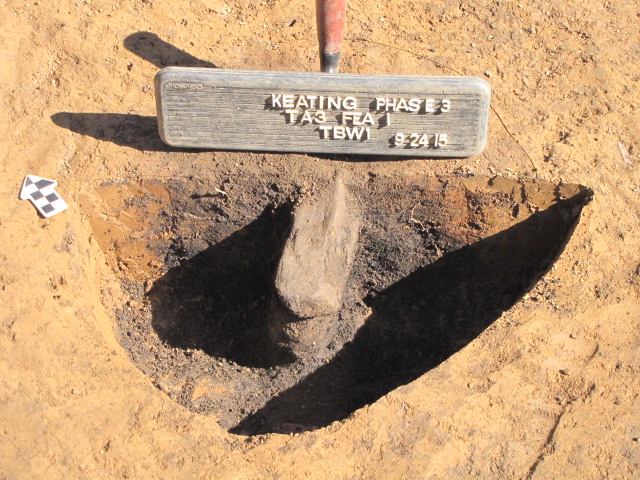Last month, we introduced you to the Keating Site (36MC0127) located along the Potato Creek north of Smethport in McKean County, Pennsylvania in this interesting blog post. Read on to learn about more cool finds at this prehistoric site!
Allegheny Archaeology Research’s data recovery excavations at this site for a Section 106 mitigation project have provided a lot of great information about prehistoric Native populations and land use for this region – including that the Keating Site was a hot spot for nut processing during the Archaic period (about 4400 years ago).
Another interesting find from the Keating site is a small assortment of chipped stone tools recovered from the site that were manufactured from Jasper. Jasper does not occur naturally in the upper Ohio River valley and would have been transported to the site area from distant locations. The nearest known sources of Jasper are to the south in Centre County near the Penn State campus and along the Bald Eagle Creek drainage in the West Branch of the Susquehanna River, near Houserville.

Representative sample of points recovered during the Keating excavation. Note that the point shown in the center of the bottom row was manufactured from jasper. This point is a Lamoka type which dates to the Archaic period (circa. 3000 B.C.). The material was possibly transported to the Keating Site from Centre County where Bald Eagle Jasper (Houserville) occurs near the Penn State Campus at State College. The West Branch of the Susquehanna drainage occurs only 16 miles (26 km) to the south of the Keating Site. Other points shown in the photo include possible (top row) Otter Creek, Genesee, and Meadowood; (bottom row): Normanskill, Lamoka, and possible Brewerton.) Photograph by Allegheny Archaeological Research, September 24, 2015.
It is suggested that the Potato Creek, listed on early maps as Cononodaw, likely served as a travel corridor that connected the West Branch of the Susquehanna River with the upper Allegheny River (upper Ohio valley). This corridor seems to be a similar but alternative travel route to the nearby Ichsua Path (see Wallace 1987:76) that linked Ichsua (Olean, NY) in the upper Allegheny with Canoe Place (Emporium, PA) on the West Branch of the Susquehanna.

Potato Creek (or Cononodaw) as viewed in its current course just south of the Keating Site. Photograph by Allegheny Archaeology Research, August 14, 2015.
Travelers along the Ichsua path passed east of the Keating Site by following along the upper Allegheny River corridor which closely follows today’s state highway route 155 southeast toward Port Allegheny. To follow the alternative route, travelers, upon reaching the forks of the river below Eldred, instead of turning southeast, could simply follow the Potato Creek corridor, following what is now state highway route 46 south and pass by the Keating Site. Eventually the journey south could continue into the headwaters of the stream before crossing over the divide into the West Branch of the Susquehanna, also reaching Canoe Place (Emporium, PA).
These long through corridors were used to travel between adjacent regions, in this instance, linking the upper Ohio River valley with the West Branch of the Susquehanna. Travel through these areas helps to explain the presence of non-local raw materials like jasper within the Keating site assemblage, which is well removed from the suspected lithic source.

The presence of jasper at the Keating Site is an indicator of travel between the Allegheny and Susquehanna River basins by prehistoric populations. A variant route along the Olean or “Ichsua” path would have taken these travelers directly to the site. Image credits: Wallace 1987:76 and Allegheny Archaeology Research, August 9, 2016.
As archaeologists we provide a variety of services to our clients as part of the regulatory process mandated by federal and state law and regulations. But, as our name “Allegheny Archaeological Research” implies, we are also deeply motivated by the research value in our projects. For us, the importance of what we do reaches beyond the requirements of a law.
Archaeology offers the potential for discovery, for learning, and for making a meaningful connection with the past. Every once in a while a project comes along that reminds us of why archaeology is important and why what we do is so very important for future generations. In keeping with this theme a short video was also produced in association with the Keating Site project. This video not only highlights the Keating Site, but also explores the importance of archaeology from various perspectives.
Watch the video and take a few minutes to learn more about the Keating site and why archaeology matters.
References:
Wallace, P.A. W. 1987. Indian Paths of Pennsylvania. Third Printing. Pennsylvania Historical and Museum Commission, Harrisburg.
This week’s post is by guest contributor Andrew J. Myers, MA as Principal Investigator/President of Allegheny Archaeology Research.
Comment Policy
PHMC welcomes and encourages topic-related comments on this blog. PHMC reserves the right to remove comments that in PHMC’s discretion do not follow participation guidelines.
Commenters and Comments shall be related to the blog post topic and respectful of others who use this site.
Commenters and Comments shall not: use language that is offensive, inflammatory or provocative (this includes, but is not limited to, using profanity, obscene, or vulgar comments); disparage other commenters or people; condone illegal activity; identify the location of known or suspected archeological sites; post personal information in comments such as addresses, phone numbers, e-mail addresses or other contact details, which may relate to you or other individuals; impersonate or falsely claim to represent a person or an organization; make any commercial endorsement or promotion of any product, service or publication.
If you would like to comment on other topics not related to this blog post but related to PHMC, please fill out the PHMC Contact Us Form.

Leave a Reply